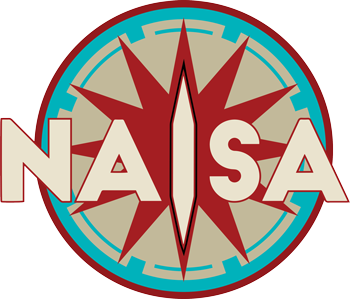CFP: Unsettling the Lyric, An edited collection centering Indigenous literatures
The property
Call for Papers
Unsettling the Lyric
An edited collection centering Indigenous literatures
Co-editors: Erin Cheslow (American Indian and Indigenous Studies, University of Illinois Urbana-Champaign), June Scudeler (Métis; Indigenous Studies, Simon Fraser University), Margaret Linley (English, Simon Fraser University)
Our proposed collection, Unsettling the Lyric, invites interdisciplinary perspectives on the possibilities, as well as the problems, of the lyric as an essential site for reexamining the histories of Indigenous-settler relations and how we express them in the present. As Daniel Heath Justice (Cherokee) argues, “poetry is a particularly compelling literary form for confronting the ruptures of history and the fragmenting effects of settler colonialism.” And the lyric especially remains as ubiquitous as it is contested. Lacking a single agreed-upon meaning, lyric is typically understood as a non-narrative poetic genre that emphasizes personal feeling over plot, singular over collective voice, and natural over urban environments. But lyric also mixes with oral traditions, including song, performance, ceremony, and ritual, and names a type of experience, method, mode of reading, theoretical construct, and field of study. Whether the term is used to describe a unique poetic quality or to invoke nearly all verse forms, the modern lyric’s historical trajectory saw it rise dramatically in the 18th and 19th centuries to become synonymous with poetry itself.
We are seeking essays and creative work that center Indigenous literatures and consider what is excluded from conventional settler-oriented histories and definitions of the lyric. We recognize how these narratives overlook poetic form’s deep entanglement with the global context of modern empires. Indigenous writers have vigorously challenged the insularity of such thinking, questioning lyric’s presumed autonomy from violence and power and emphatically reminding us that poetry, as Mishuana Goeman (Seneca) puts it, “brings attention to history, makes us look at the structures, the diction, and the consequences of colonialism, but does not do so to erase, look past, or disembody the material reality of Indigenous people.” Unsettling the Lyric aims to offer new ways of thinking about literary representation and formal strategies in the context of the history and continuing legacy of empire, colonialism, and Indigenous sovereignty while also uplifting Indigenous epistemologies and opening ways of, in Warren Cariou’s (Métis) words, “decoloniz[ing] the imagination by bridging the ideological boundaries that often separate the beneficiaries of colonialism from those who are objectified and impoverished by it.”
The lyric has long been implicated in coercive colonial indoctrination and assimilative processes as a tool for suppressing local cultures and languages while promoting settler presuppositions of Indigenous deficiency. However, the lyric also offers critical perspectives on colonial practices and their legacies and serves purposes specific to Indigenous communities, carrying Indigenous voice, affect, and expressions of place in ways that meant, for Sia Fiegel (Samoan), “that England, a far, far away place where daffodils grew in its meadows, could not possibly be ‘the centre.’” Even as settler colonists have encountered, classified, collected, adapted, appropriated and displaced diverse Indigenous cultural forms and practices, both Indigenous and settler writers continue to compose, interpret, translate, quote, and perform lyric in myriad ways. What emerges from these formal tensions and how does poetic form both limit and expand what Jarrett Martineau (Cree/Denesųłiné) and Eric Ritskes have called a “distribution of the sensory”?
We welcome reflections, analyses, and provocations on the lyric understood in the broadest sense not only as a formidable disciplinary force but also as inspiration for the critical imagination. Essays might consist of recoveries or rereadings of specific poems or bodies of work that have been historically miscategorized, misunderstood, or neglected or they may newly consider contemporary poetry that writes back to or otherwise interrogates, disrupts and transgresses boundaries established by settler states and their oppressive policies. Proposals might address, but are not limited to the following questions:
- How might we define an Indigenous lyric?
- What material techniques and innovations to the lyric derive from Indigenous oral story traditions and writing systems, such as pictographs and petroglyphs as well as beadwork, carving, ceremonial dress, and other art forms?
- In what ways has lyric been used to express struggles over land, name, place, other-than-human connection, language, community, voice, and sovereignty?
- How have lyrics moved within, across, and outside Indigenous communities, potentially transforming the stakes of the global?
- What role does lyric play in the continuous colonial relationship between Indigenous nations and settler states and how might it function in negotiating conflicted and fractured spaces of Indigenous-settler relations?
- How might the lyric capture the disconcerting and disorienting experiences of settler- colonialism or disrupt the temporal logics that postpone and foreclose Indigenous presences and anticipate collective futures?
- What is the place of Indigenous poetry in the university classroom?
- In what ways does lyric’s promise of universal humanism fall short?
- How might lyric afford a zone of immanent critique or essential space of hope?
Please send proposals (300 words) and brief biographies (100 words) to the editorial team, care of Erin Cheslow, at cheslow3@illinois.edu by September 13, 2024. Proposals for collaborative work are welcome. Completed chapters of 4,000-6,000 words will be due in spring 2025.
Works Cited
Cariou, Warren (Métis). “Edgework: Indigenous Poetics as Replacement.” Indigenous Poetics in Canada, ed. Neal McLeod. WLU, 2014: 31-38.
Fiegel, Sia (Samoan). “Pua and Daffodils: Weaving the Ula in Postcolonial Oceania.” Journal of New Zealand and Pacific Studies, vol. 4, no. 1, 2016, pp. 5-17.
Goeman, Mishuana (Seneca). “Sovereign Poetics and Possibilities in Indigenous Poetry.” The Cambridge History of Native American Literature, ed. Timothy Yu. Cambridge UP, 2021, 61- 70.
Justice, Daniel Heath (Cherokee). Why Indigenous Literatures Matter. UBC, 2018.
Martineau, Jarrett (Cree/Denesųłiné) and Eric Ritskes. “Fugitive Indigeneity: Reclaiming the Terrain of Decolonial Struggle through Indigenous Art.” Decolonization: Indigeneity, Education & Society, vol. 3, no. 1, 2014, pp. I-xii.


Sorry, the comment form is closed at this time.